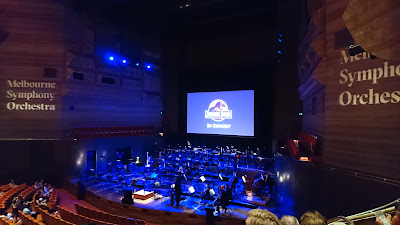The Summer school holidays are traditionally a quiet time at work when, with so many on leave, one can focus on those small personal projects that you never have a chance to do during the rest of the year. You take things a little slower and wind down after the usually hectic period leading up to Christmas.
I am fortunate enough to be able to work from home over the Summer holidays, allowing me to keep an eye on Alex whilst still doing work. The lack of a four hour daily transit to work and the need to worry about school lunches and homework means there are more hours in the day to both work and play.
That's the theory. So why am I so bloody knackered?
After dithering for most of the year a certain fracking (and I use that as an epithet) group demanded that we make their website for them by the end of January. And I am off on holidays for most of January.
I never wanted to do this site. We should be decarbonising, making this research redundant. Plus it's industry funded so they can pay for an external site and developer. It's not like energy companies pay their fair share of taxes.
The only consolation is that at least much of the research is focused on mitigation and preventing damage to the environment from the operations.
But they didn't listen to me. Nor did they employ people with web experience to manage the project. So not only do I have to develop the site, but I also have to handhold the authors. And I and the rest of the team already have a lot of work on my plate.
We have a new graphic designer replacing the one I worked with on last year's fantastic
Utopia project. This new guy is perfect for the organisation as he has a tendency to overcomplicate everything. I try to use WordPress' inbuilt functionality and structure as much as possible, allowing users flexibility at the expense of centralised control. Simplicity and flexibility are my mottoes.
It's one reason why our WordPress sites are far more popular for authors than our Sitecore websites.
User flexibility and control is an anathema to corporate operations.
So I'm presented with the need for a large number of templates, custom post types and fields (using Advanced Custom Fields). And there's no time to argue because they've been approved and the graphic designer is off on leave. And our front end developer has only a short time available too.
Naturally a lot of the elements and styles don't fit into WordPress' default generated HTML. So that means things like custom menu walkers and archive pages.
I find I have to do almost no training to get users up to speed with vanilla WordPress but customisation means additional training and the people responsible are on leave.
There's no way I can do everything in time, no time to train a contractor up and get them permissions, so I tell them they'll only have a subset of pages available for the initial launch lose the fancy searches for now.
And I begin working flat out before and after Christmas. I give them some custom page types so the authors can start entering content while I work on listing pages. I solve problems and churn code out. What I did was petty awesome, even if I do say so myself. Not just reusing other people's themes and plugins like some commercial developers do (because my clients are "special needs" so virtually nothing works out of the box).
I'd like to work on this on the evenings and spend time during the day looking after Alex. But no, in come the phone calls. Sometimes every ten minutes or so. Help entering content, changes to be made to templates, the odd bug discovered. One day I counted to ten and was about to open the door on a hiding Alex playing a game of hide and seek when the phone rang. Again.
You see, when a manager or communicator signs off on something it means very little. They want changes. Limitations are unacceptable.
But I want to spend some time with my kid. The year is too busy and he grows up so fast that any time together is precious.
I finally made the
site live today. More bugs/changes. Eventually, at 4 pm (and if you think that's skiing off early I'd had 10 minutes off for lunch), when I was supposed to go and pick up Alex from a friend's place another change request came in and I lost it. Privately. My head was so exhausted that I couldn’t cope with any more changes. I told them no. That any further changes ran the risk of further bugs. They apologised, said thank you, and I fixed the last known bug.
Then I found this floating in our swimming pool and fished him out...
Another giant bug fixed!



































